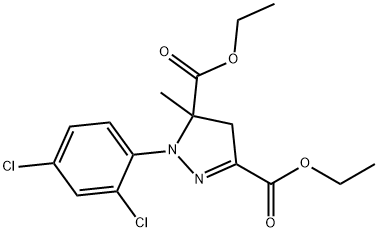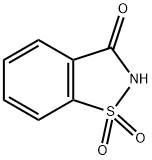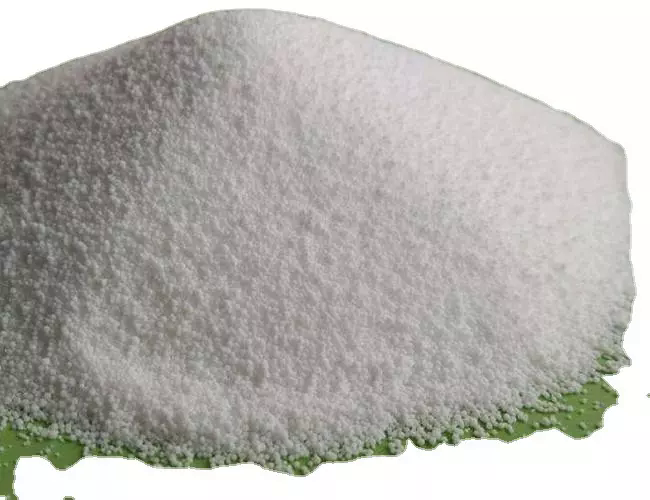Denatonium saccharide
- CAS NO.:90823-38-4
- Empirical Formula: C28H33N3O4S
- Molecular Weight: 507.65
- MDL number: MFCD00214097
- EINECS: 623-097-7
- SAFETY DATA SHEET (SDS)
- Update Date: 2024-10-23 15:23:57

What is Denatonium saccharide?
Chemical properties
solid
The Uses of Denatonium saccharide
Denatonium Saccharide is a bitter taste compound that was used to study taste receptor cells.
What are the applications of Application
Denatonium saccharide is a quaternary ammonium cation with an inert anion
Properties of Denatonium saccharide
| Melting point: | 182 °C |
| storage temp. | Sealed in dry,Room Temperature |
| solubility | DMSO (Slightly), Methanol (Slightly) |
| form | Solid |
| color | White to Off-White |
| Stability: | Stable. Incompatible with strong oxidizing agents. |
| CAS DataBase Reference | 90823-38-4(CAS DataBase Reference) |
| EPA Substance Registry System | Denatonium saccharide (90823-38-4) |
Safety information for Denatonium saccharide
| Signal word | Warning |
| Pictogram(s) |
 Exclamation Mark Irritant GHS07 |
| GHS Hazard Statements |
H302:Acute toxicity,oral H315:Skin corrosion/irritation H318:Serious eye damage/eye irritation |
| Precautionary Statement Codes |
P264:Wash hands thoroughly after handling. P264:Wash skin thouroughly after handling. P270:Do not eat, drink or smoke when using this product. P280:Wear protective gloves/protective clothing/eye protection/face protection. P302+P352:IF ON SKIN: wash with plenty of soap and water. P332+P313:IF SKIN irritation occurs: Get medical advice/attention. |
Computed Descriptors for Denatonium saccharide
Abamectin manufacturer
United Phosphorus Limited
1Y
Phone:+91-9004390689
Whatsapp: +91 9004390689
product: Denatonium saccharide 98%
Sunmoon Pharmaceuticals Pvt Ltd
1Y
Phone:+919890725812
Whatsapp: +91-9890725812
product: Denatonium saccharide 90823-38-4 98%
The Lakshmiji Organics Pvt Ltd
1Y
Phone:+919322661064
Whatsapp: +91-9322661064
product: Denatonium saccharide 98%
New Products
4-AMINO-TETRAHYDRO-PYRAN-4-CARBOXYLIC ACID HCL 4-(Dimethylamino)tetrahydro-2H-pyran-4-carbonitrile 4-Aminotetrahydropyran-4-carbonitrile Hydrochloride (R)-3-Aminobutanenitrile Hydrochloride 3-((Dimethylamino)methyl)-5-methylhexan-2-one oxalate 1,4-Dioxa-8-azaspiro[4.5]decane 5-Bromo-2-nitropyridine Nimesulide BP Aceclofenac IP/BP/EP Diclofenac Sodium IP/BP/EP/USP Mefenamic Acid IP/BP/EP/USP Ornidazole IP Diclofenac Potassium THOMAIND PAPER PH 2.0 TO 4.5 1 BOX BUFFER CAPSULE PH 9.2 - 10 CAP SODIUM CHLORIDE 0.1N CVS ALLOXAN MONOHYDRATE 98% PLATINUM 0.5% ON 3 MM ALUMINA PELLETS (TYPE 73) LITHIUM AAS SOLUTION 2-Bromo-1-(bromomethyl)-3-chloro-5-nitrobenzene 2-Bromo-3-nitroaniline N-(3-Hydroxypropyl)-N-methylacetamide 3-Bromo-6-chloropyridazine 4-ethyl-3-nitrobenzoic acidRelated products of tetrahydrofuran








You may like
-
 Denatonium Saccharide 98%View Details
Denatonium Saccharide 98%View Details -
 90823-38-4 98%View Details
90823-38-4 98%View Details
90823-38-4 -
 Denatonium saccharide 98.00% CAS 90823-38-4View Details
Denatonium saccharide 98.00% CAS 90823-38-4View Details
90823-38-4 -
 Denatonium Saccharide CAS 90823-38-4View Details
Denatonium Saccharide CAS 90823-38-4View Details
90823-38-4 -
 Denatonium saccharide 98%View Details
Denatonium saccharide 98%View Details
90823-38-4 -
 Denatonium saccharide 90823-38-4 98%View Details
Denatonium saccharide 90823-38-4 98%View Details
90823-38-4 -
 Denatonium Saccharide CASView Details
Denatonium Saccharide CASView Details -
 Denatonium saccharide 98% CAS 90823-38-4View Details
Denatonium saccharide 98% CAS 90823-38-4View Details
90823-38-4
Statement: All products displayed on this website are only used for non medical purposes such as industrial applications or scientific research, and cannot be used for clinical diagnosis or treatment of humans or animals. They are not medicinal or edible.